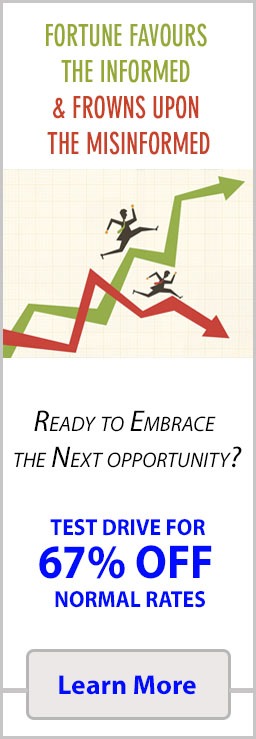
Red Isn’t Just a Hue—It’s a Signal
Updated Aug 25, 2025
Stand in front of a stop sign and notice the reflex: a slight chest tighten, a subtle pause in your stride. Red doesn’t sit quietly—it commands. Across history, from banners in battle to the pulse of blood, red has marked urgency, danger, passion, and power—contradictions compressed into a single, blazing wavelength. The psychology of color isn’t a parlor trick; it’s an invisible hand shaping how we feel, decide, and act.
The mind is not a straight line; it’s a network where memory, instinct, and perception collide. Color is one of the most primal inputs to that network. Blues tend to soothe and lower arousal; yellows can heighten vigilance and draw attention. These aren’t isolated flashes—they travel as vectors through culture and experience, intersecting with everything from myth to market behavior. Consider a trader watching a screen: green bars kindle hope; red cascades stir caution or fear. That reaction isn’t just conditioning—it’s ancient wiring meeting modern signals. In a sense, the brain runs a color-coded risk engine, continuously pricing emotion, probability, and the stories we tell ourselves.
Markets in Technicolor: How Crowds Catch Fire
Crowds don’t process—they feel. And color is lighter fluid for collective mood. That’s why breaking-news banners scream in red and celebratory rings of the bell glow in gold. Color slips past spreadsheets to the limbic system where fear and euphoria live. Think back to Black Monday in 1987: media graphics washed in crimson, quote screens flooded with losses, and heart rates spiked in sync. In such moments, colour stops being decoration and becomes a force multiplier—accelerating feedback loops as emotion drives behavior, behavior moves prices, and those prices move feed emotion again. It’s a kaleidoscope of crowd psychology where a simple palette can tilt the entire frame.
Technical Analysis: When Indicators Dream in Colour
Let’s cut through the noise: technical indicators are not oracles. They are tools—adaptive, evolving, and as haunted by human psychology as any myth or legend. The psychological effects of colour on human behaviour are encoded in every chart, every oscillator, every overbought or oversold signal. On TradingView, the WaveTrend Oscillator pulses green and red—the colours of life and death, greed and fear. Neural Network Oscillators, powered by machine learning, generate synthetic “intuition,” spitting out signals that seduce the eye as much as the mind.
Here’s the trick: these indicators are not just mirrors of price action, but of collective emotion. When a neural net “learns” to anticipate a reversal, it’s capturing more than numbers; it’s mapping the deep currents of hope and terror, the ancient dance of attraction and aversion that catalyses. The psychological effects of colour on human behaviour are thus inseparable from the very algorithms we trust to guide us.
Physics, Myth, and the Chromatic Unconscious
Colour is not a psychological afterthought—it is a physical phenomenon, a vibration, a frequency. The blue of a clear sky, the gold of sunlight, the ultraviolet that burns unseen: each is a data packet in the evolutionary arms race. Our ancestors learned to trust ripe fruit that blushed red, to avoid the yellow-black threat of a wasp. Myths gave colour to gods and monsters—Poseidon’s deep blue, Helios’s radiant gold, Loki’s green mischief.
In physics, colour is energy; in myth, it’s meaning; in trading, it’s signal. The psychological effects of colour on human behaviour emerge at the intersection of these domains. We are not separate from the wavelengths we see—we are their living consequence. Our biology, our stories, our markets—they all oscillate together, a chromatic fugue that shapes our every move.
Paradox: Stability in Flux, Certainty in Uncertainty
Colour is both universal and particular. Red means danger—except when it means luck. Blue calms—except when it chills. In markets, green is profit—except when it’s a trap. The psychological effects of colour on human behaviour are defined by contradiction. Depending on context, culture, and time of day, the same hue can comfort or provoke.
Embracing this paradox is not a weakness—it is where insight lives. To trade well, to live well, is to dance with ambiguity. The most successful investors, artists, and philosophers do not seek certainty in color, but possibility. They know that meaning is fluid, context is king, and edge cases—those wild anomalies at the margins—are where breakthroughs hide.
Edge Cases: The Outliers That Make the Rules
Let’s leave the bell curve behind. The world is not average, and neither are you. Consider synesthetes—people whose senses cross-wire so that numbers appear as colours, or music tastes like purple. For them, the psychological effects of color on human behavior are not theoretical—they are lived, embodied, inescapable. In the market, outliers write the story, too. The flash crash, the parabolic rally, the quiet before the storm—these moments reshape the landscape, bending the rules and rewriting the playbook.
In trading, edge-case strategies like buying out-of-the-money options, or going long volatility when the masses are complacent, exploit these chromatic extremes. The best machine-learning indicators do the same, sniffing out subtle shifts in colour-coded momentum that signal impending chaos or opportunity. It’s at the edges—where red turns to gold, where blue becomes ultraviolet—that the future is born.
Emergent Properties: The Symphony Beyond the Notes
A single color means little. It is the interplay-the chord, the clash, the crescendo—that matters. The psychological effects of colour on human behaviour are emergent: unpredictable, often counterintuitive, and always more than the sum of their parts. When red and green collide in a chart, the result is not a simple average—it’s a dynamic tension, a living signal that evolves as traders respond, adapt, and anticipate.
Emergence is the secret sauce of evolution, creativity, and innovation. In markets, as in nature, it’s not the parts but their relationships that birth new patterns. A neural network oscillator trained on historical data does not “see” color the way we do—but its outputs, interpreted by human eyes, spark new behaviors, new feedback loops, new realities. This is where charts become predictive hallucinations—living prophecies that shape the very future they claim to forecast.
From Colour to Consciousness: A Strategy for the Visionary
What does it mean to master the psychological effects of colour on human behaviour? It means moving beyond reaction, beyond imitation, to a place of creative synthesis. The visionary does not simply follow the red or chase the green. Instead, they ask: What is the hidden structure beneath the surface? Where do colours converge, split, or mutate? How do emotion, perception, and probability entwine to create new opportunity?
It is here, in this multidimensional space, that true strategy is forged, not in the safety of averages, but in the wild, unpredictable dance of the emergent. The trader who sees the pulse beneath the color, the physicist who feels the myth inside the formula, and the psychologist who trades in paradox are the ones who shape reality, not merely react to it.
The Paradoxical Power of Colour: An Invitation
So, what have we learned? The psychological effects of colour on human behaviour are not a footnote but a force. Colour is both a tool and a trap, a map and a maze. The greatest insights live at the intersection, where psychology, trading, physics, and myth collide, contradict, and create.
Embrace the contradiction. Dive into the edge cases. Let the emergent properties of colour transform your strategies, perceptions, and life. The world is not grayscale. Neither are you. See the spectrum. Live the paradox. Become the emergent.










